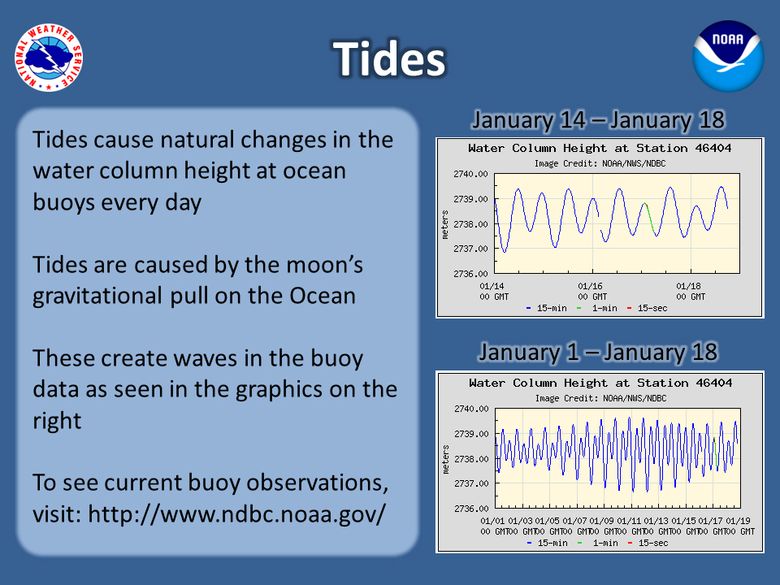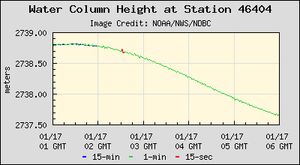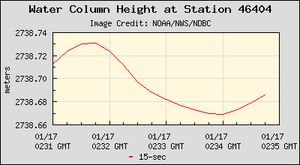NW megaquake imminent? Report is bogus, scientists say
 The 2001 Nisqually earthquake destroyed the outside wall of a Pioneer Square office in Seattle. (Tom Reese / The Seattle Times)
The 2001 Nisqually earthquake destroyed the outside wall of a Pioneer Square office in Seattle. (Tom Reese / The Seattle Times) A New York website's claim that the seafloor off the Pacific Northwest dropped 4 feet triggered anxiety and calls to emergency managers, but it's not true.
A report that the seafloor off the Pacific Northwest dropped abruptly over the weekend — possibly presaging a major earthquake — put many folks in the region on edge. But scientists say the claim is bogus.
Posted Jan. 17 on a New York-based news site, the report says a tsunami warning buoy 230 miles west of Cannon Beach, Ore., measured a 4-foot plunge in the ocean floor. But what got people's attention and led to widespread sharing via Facebook and other social media was the site's contention that the drop was caused by eastward movement on the offshore fault called the Cascadia Subduction Zone.
"This type of event is usually followed by a massive upward movement of the North American Plate, causing a very severe earthquake," the report said.
But in fact, the seafloor didn't budge at all, said Paul Whitmore, director of the National Tsunami Warning Center in Palmer, Alaska.
The buoy is part of the Deep-ocean Assessment and Reporting of Tsunamis, or DART network. Equipped with sensitive pressure gauges, the buoys are designed to detect tsunamis and issue warnings.
The buoy in question is so far away from the underwater fault that it would not be able to detect any movement there, said Humboldt State University marine geologist Jay Patton.
The instrument did go into alert mode Saturday evening, which is apparently what caught the news site's attention, Whitmore said. But the alert was triggered by wind- generated waves that were slightly atypical. "It wasn't anything seismically generated," he said. "It had nothing to do with seafloor movement."
Whitmore said the tsunami warning center weeds out similar false alarms every week.
The news site compounded its error by interpreting normal tidal fluctuations as 4 feet of seafloor movement.
"Where that buoy is, the average daily tide is probably 3 to 5 feet," Whitmore said.
 The National Weather Service received so many calls about the bogus report that it prepared this graphic, which shows the normal tidal fluctuations at the buoy off the Oregon coast. (NOAA)
The National Weather Service received so many calls about the bogus report that it prepared this graphic, which shows the normal tidal fluctuations at the buoy off the Oregon coast. (NOAA)  This image shows fluctuations in water height at the same buoy over a period of several hours. The... (NOAA) More
This image shows fluctuations in water height at the same buoy over a period of several hours. The... (NOAA) More But the report tapped into regional anxiety over the threat of a megaquake and tsunami. Those jitters were heightened last summer by a story in The New Yorker that laid out the risk in dramatic detail.
Worried residents called local emergency-management departments over the weekend. Emergency managers in turn contacted the tsunami center and local weather service offices to find out what was going on.
Patton got so many calls and messages from friends that he decided to write a detailed blog post refuting the website's claim.
 This image, which depicts water heights over a five-minute period, shows the small surface wave... (NOAA) More
This image, which depicts water heights over a five-minute period, shows the small surface wave... (NOAA) More The unnamed author of the original report remains unswayed, though. In response to several critiques, the site accused other media of "shoddy journalism" and "quackery," while insisting its version of the incident was accurate.
--
Read my blog at http://eclecticarcania.blogspot.com/
My Facebook: http://www.facebook.com/derkimster
Linkedin profile: http://www.linkedin.com/pub/kim-noyes/9/3a1/2b8
Follow me on Twitter @CalDisasters
 | This email has been sent from a virus-free computer protected by Avast. www.avast.com |
__._,_.___
No comments:
Post a Comment